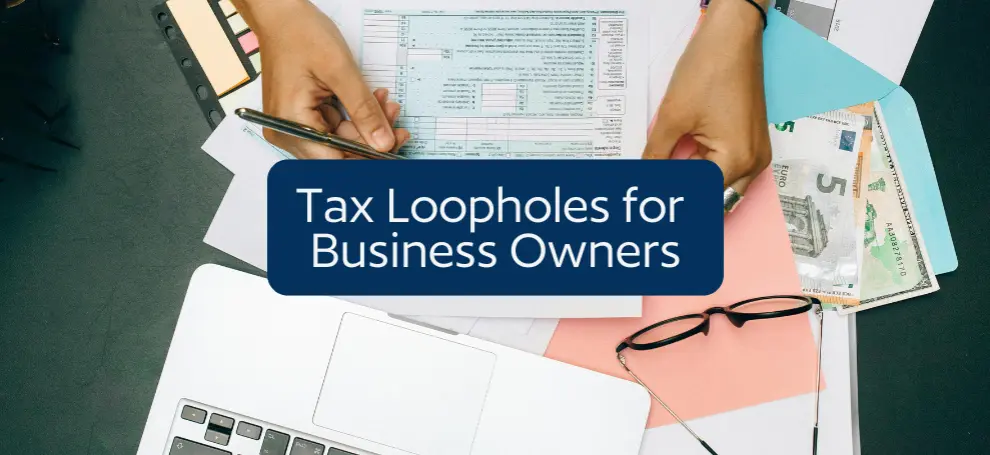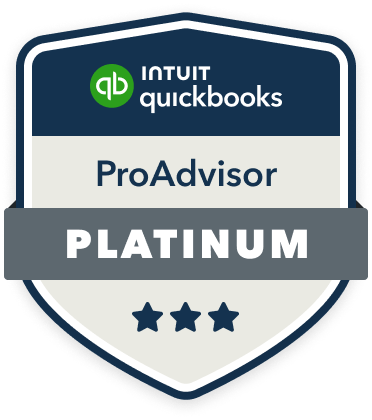Paying taxes can be a hassle, but what if there were ways to keep more of your money without breaking the law? Good news: there are legal ways to reduce your tax bill, and they’re called tax loopholes. Think of them like hidden opportunities in the tax rules that allow you to save. And the best part? They are available to all business owners, regardless of the size of your business. Let’s dive in and see how you can take advantage of them.
What are tax loopholes, and how can they benefit my business?
Tax loopholes are legal provisions in the tax system that allow businesses to reduce their tax bills. Think of them like special opportunities in the tax rules that let you pay less without breaking any laws. By using these loopholes, your business can lower its taxable income, meaning you owe less in taxes and keep more money to grow or run your business.
Here are some key strategies that can benefit your business:
- Section 179 Deduction: If your business buys equipment, vehicles, or machinery, you may be able to claim the entire purchase price as a deduction when you buy it (up to a limit). This reduces your taxable income immediately instead of spreading the deduction over several years.
- Home Office Deduction: If you use part of your home exclusively for business, you can deduct a portion of your rent, utilities, internet, and other home-related expenses. For example, if your home office occupies 10% of your home, you can deduct 10% of your rent and utility bills.
- Accountable Plans for Reimbursements: If you or your employees spend money on business-related costs (like travel, supplies, or meals), an accountable plan allows these expenses to be reimbursed tax-free. The business can also deduct these expenses, making it a win-win. For example, if an employee pays for a flight to attend a conference and submits receipts, you can reimburse the amount without it being considered taxable income.
- Contributions to Retirement Plans: Contributions to retirement plans, such as a SEP IRA or 401(k), are deductible from your taxable income. This reduces your business’s tax liabilities while enabling you to save for the future.
- Proactive Expense Planning: Timing your expenses strategically can help you manage taxes better. For example, if you know you’ll owe taxes this year, making a big purchase like new office equipment before December 31 lets you deduct that expense in the current tax year, reducing your taxable income.
- Choosing the Right Business Structure: The type of entity your business operates as (sole proprietorship, partnership, LLC, S-Corp, or C-Corp) makes a difference in the tax you pay. For instance, S-Corps allow you to pay yourself a reasonable salary, which is subject to employment taxes, while the rest of your earnings can be distributed as dividends, avoiding self-employment taxes.
- Timely Tax Payments: Paying estimated taxes quarterly keeps you on track and helps avoid IRS penalties. For instance, if you owe $40,000 in taxes for the year, dividing that into four $10,000 payments ensures you won’t have to pay additional charges for underpayment. (^1^) (^2^)
What’s the difference between tax loopholes and tax avoidance, and could misusing a loophole get me in trouble with the IRS?
Tax loopholes are legal provisions that allow for tax reduction, while tax avoidance involves using legal methods to minimize tax liability. Misusing a loophole, such as claiming deductions without proper documentation, can lead to penalties and interest from the IRS. (^2^)
How can I claim 100% tax depreciation on my business vehicle or assets to save on taxes?
If you buy something for your business, like a car or computer, you can use Section 179 to deduct the full cost from your taxes that year. This means if you buy a new car for the business, you can subtract the full price from your taxable income, which helps you pay less in taxes. (^3^)
Can I deduct expenses for using my home as a business office, and how do I calculate what I can claim?
Yes, you can deduct expenses for using your home as a business office if it is your principal place of business or used regularly and exclusively for business. You can calculate the deduction using the simplified method (a standard deduction of $5 per square foot of home used for business, up to 300 square feet) or the regular method (actual expenses multiplied by the percentage of your home used for business). For example, if your home office occupies 10% of your home, you can deduct 10% of your home-related expenses like rent, utilities, and mortgage interest. (^4^) (^5^)
How can setting up retirement accounts for myself and my family help reduce my business taxes?
Setting up retirement accounts, such as a SEP IRA, SIMPLE IRA, or 401(k), can help reduce your business taxes by allowing you to make tax-deductible contributions. These contributions reduce your taxable income, and the earnings on the investments grow tax-deferred until withdrawal. For example, contributing $23,000 (the limit for tax year 2024) to a 401(k) reduces your taxable income by the same amount, lowering your overall tax liability. (^6^)
How can planning my business expenses in advance help me control profits and reduce taxes?
Proactive expense planning enables better control of reported profitability and ensures accurate tax reporting. By timing expenses strategically, such as making large purchases before the end of the tax year, you can maximize deductions and reduce taxable income. (^5^)
How does choosing the right business structure affect my taxes?
Choosing the right business structure significantly impacts your tax obligations, liability, and administrative requirements. Here’s a concise overview of how different structures affect your taxes:
- S Corporation (S-Corp): S-Corps offers pass-through taxation, avoiding double taxation by passing income, losses, deductions, and credits to shareholders, who report them on their personal tax returns. Shareholders who are employees can receive a salary subject to employment taxes, while distributions (dividends) are not subject to self-employment taxes, potentially reducing overall tax liability.
- Single-Member Limited Liability Company (SMLLC): By default, an SMLLC is treated as a disregarded entity, with income and expenses reported on the owner’s personal tax return, subjecting the owner to self-employment taxes. However, an SMLLC can elect to be taxed as a corporation (C-Corp or S-Corp) for different tax advantages.
- Partnership: Partnerships benefit from pass-through taxation, avoiding double taxation by passing profits and losses to partners, who report them on their personal tax returns. Partners are subject to self-employment taxes on their share of the income. Partnerships offer flexibility in income allocation, beneficial for tax planning.
- Sole Proprietorship: This simplest structure involves reporting income and expenses on Schedule C of the owner’s personal tax return, subjecting the owner to self-employment taxes. While it offers complete control, it also entails unlimited liability.
- C Corporation: C-Corps face double taxation, with corporate income taxed at the corporate level and dividends taxed at the shareholder level. They benefit from a flat corporate tax rate and can deduct employee benefits, reducing taxable income.
In summary, each business structure has distinct tax implications, and the choice should align with your specific financial and operational goals. (^7^) (^8^)
How can paying taxes early and meeting deadlines help me avoid penalties?
Paying taxes early or on time helps you avoid costly penalties and interest, keeps you in good standing with the IRS, and ensures smoother cash flow throughout the year. Breaking taxes into quarterly payments makes them more manageable and prevents a large lump sum at year-end. Paying on time saves money and reduces stress while keeping you focused on business growth without unnecessary financial surprises. (^9^)
How can USA Tax Gurus help me use tax loopholes to save money?
USA Tax Gurus can assist you in legally leveraging tax loopholes to maximize your savings by offering expert guidance on various deductions, credits, and exemptions tailored to your business needs. Our services include comprehensive tax planning to ensure you remain compliant with tax laws while optimizing your tax benefits. By identifying opportunities within the tax code, we help you strategically reduce your tax liability and enhance your financial efficiency.
Sources:
Source 1: 7 Tax Loopholes For Business Owners – Akhil Bansal CPA.pdf
Source 2: IRS Anti-tax law evasion schemes
Source 3: Publication 946, How to Depreciate Property | IRS
Source 4: Publication 587 (2022), Business Use of Your Home | IRS
Source 5: Publication 535, Business Expenses | IRS
Source 6: Publication 560, Retirement Plans for Small Business | IRS
Source 7: Business structures | IRS
Source 8: Choose a business structure
Source 9: Publication 505 (2024), Tax Withholding and Estimated Tax


